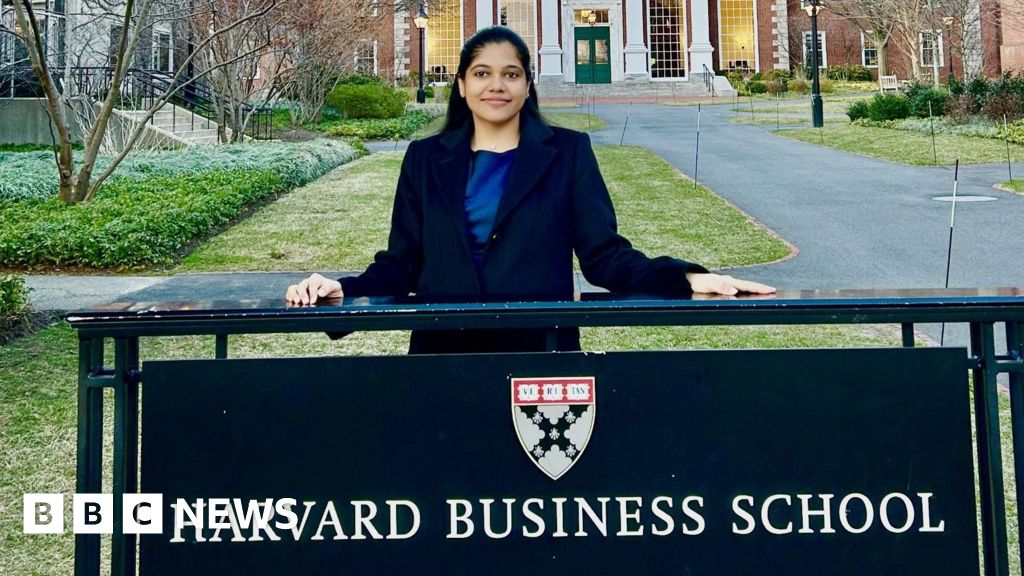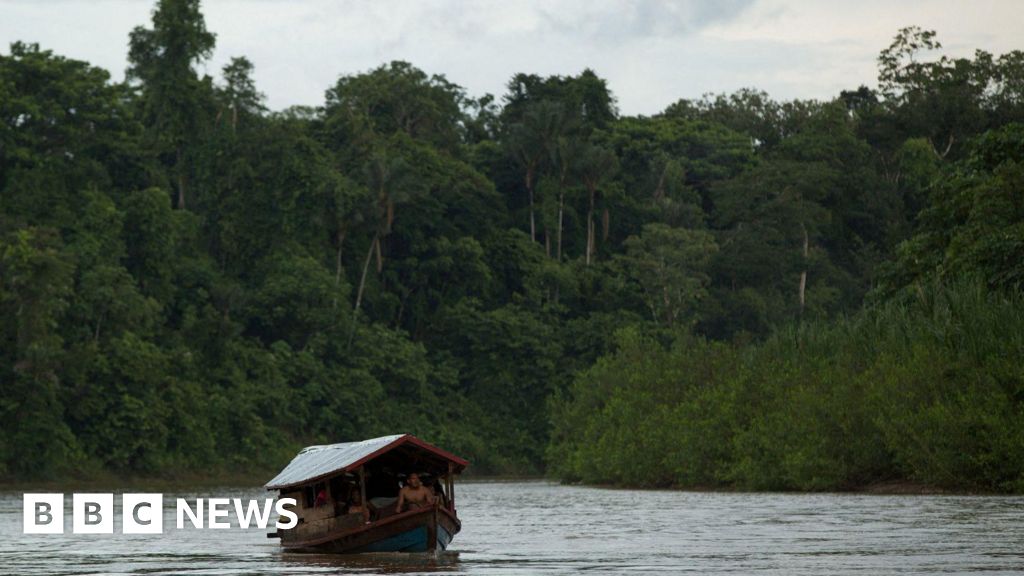ARTICLE AD BOX
By Jonathan Head
Southeast Asia correspondent
Image source, Getty Images
Image caption,Some anti-coup protestors improvising their own weapons during a protest
In the first hours after the military grabbed power in a shock coup in Myanmar one year ago, there was little public reaction.
No-one seemed to know how they should react, and Aung San Suu Kyi, the woman who had led opposition to military rule for the previous three decades was under arrest.
"That morning the internet and phone lines were cut", recalls Moe Sandar Myint, a prominent union leader in Hlaing Tharyar, an industrial district of Yangon.
"We did not believe the news at first, but after we went out to buy radios we knew the coup was true. We were devastated. It was a day of darkness for us. Myanmar was only just starting to grow. Figuring out how to fight back against the dictators was of the utmost importance to us."
But by the end of that day a message from Suu Kyi, written it seems in anticipation of the coup, had been published, urging the people of Myanmar not to accept it.
At the same time one of her most trusted advisors, Win Htein, citing the example of Mahatma Gandhi, appealed for a campaign of civil disobedience, in keeping with Suu Kyi's long-standing strategy of nonviolent resistance.
Thus was born the CDM, the Campaign for Civil Disobedience, initially led by health workers and teachers who refused to go to work, and quickly supported by trades unions, civil servants and a vibrant cross-section of music and movie stars, LGBT+ groups and ethnic minorities.
Not only did they endorse Aung San Suu Kyi's non-violent beliefs - her face was everywhere on protest posters - they also called for the restoration of the elected government she headed.
Moe Sandar Myint organised the first of many worker protests four days after the coup. They were part of a nationwide movement against military rule which in that first month filled the streets with carnival-like rallies.
"I was worried about my workers getting shot", she says. "But seeing the overwhelming participation of the people when we marched my fears fell away."
Today she lives in exile in Thailand with her husband and three children after a gruelling flight from Yangon that took her first to the war-torn borderlands controlled by ethnic insurgents, and then on a frightening night-time journey across the border.
Moe Sandar Myint now lives in exile in Thailand after a harrowing escape from Myanmar
The turning point was last March, when the coup leaders ordered troops to crush the protest movement without restraint.
For Moe Sandar Myint the violence came on 14 March. By then she was already staying away from her home to avoid arrest.
Hlaing Tharyar, with its dense population of migrant workers, had a reputation as a tough neighbourhood in Yangon, and residents had barricaded the roads in an attempt to stop the military from entering.
"I was with the other union leaders planning our next action. Suddenly we heard the military was coming, so we scattered. They had blocked all the roads out of Hlaing Tharyar, and were shooting at us," she said. "Many people died, including some of my workers."
"First they began to shoot from the middle", remembers her husband Ko Aung who was on the streets with the protesters. "Then the shooting came from the sides and from behind us. We tried to take cover but there was no protection from the bullets."
Myanmar Witness, an organisation using satellite and other imagery to verify human rights abuses, believes as many as 80 were killed Hlaing Tharyar in what it describes as a massacre with indiscriminate shooting by the security forces.
Video from that day shows police positioned on a bridge looking into Hlaing Tharyar, casually taking shots at the people below. After they raided Moe Sandar Myint's house, she knew she and the family would have to leave Yangon.
"They have guns but we have people": Inside Myanmar’s Spring Revolution
Many other participants in that euphoric first month of protest have also fled, some to join a desperate, unequal armed struggle against the military junta.
No going back
Aung San Suu Kyi has since vanished from public view, cut off from the struggle behind a curtain of secret show-trials.
MPs and officials from her party formed a shadow National Unity Government (NUG) last April, aiming to challenge the junta's attempts to win international recognition, and to broaden the opposition leadership by including more ethnic minorities.
But with its members scattered and on the run from the military, the NUG's influence over the armed resistance groups proliferating across Myanmar is limited.
These local militias, calling themselves People's Defence Forces or PDFs, use captured or home-made guns and improvised explosives to attack military convoys and assassinate officials working for the junta.
They no longer talk much about peaceful protests. Indeed some of them are critical of Su Kyi's autocratic leadership, and her past efforts to co-exist with an over-powerful armed forces. They say there can be no going back to the status quo ante.
George and Frank are two young men who took part in the anti-coup protests near their homes in Yangon. We cannot use their real names.
George was a business executive; Frank, a keen video-gamer, worked in a café. Both are now volunteer fighters with PDF operating in insurgent-controlled areas.
After watching people being gunned down at their barricades in March, and realising that no international help was coming, they decided the non-violent strategy was not working.
"It was difficult to know where to begin our armed struggle', says George. "We were normal people, with no experience of military training."
Image source, STR / AFP
Image caption,Protestors were forced to take cover using rudimentary weapons as they confronted the police during a crackdown on demonstrations
For activists in Yangon, the easiest option was to join up with one of the established insurgent groups to the east of the city, which have been fighting the central government for decades.
Some of these groups have stayed aloof from the anti-coup movement, but three in particular, the Kachin Independence Army (KIA) in the north, the Karen National Liberation Army (KNLA) and the Karenni Nationalities Defence Force (KNDF) along the Thai border, have offered sanctuary and training.
The first problem for George and Frank who joined the KNLA, was winning their trust. The group is wary of possible military infiltrators, and harbours a long-standing suspicion of a majority population which until recently had shown little sympathy for Myanmar's minorities.
Their second problem was weapons. They had to buy their own, on the black market.
George paid the equivalent of $2,000 (£1,500) for a pistol. Frank sold his car and a piece of land to fund his $3,500 purchase of a US-made M4 rifle. Ammunition is a constant problem.
Their Karen hosts expect PDF volunteers to be largely self-funding, but still operate under the command of KNLA officers. It has been a tough adjustment.
"Before all this I was only interested in studying and playing games", says Frank.
"Living in the jungle, sleeping on the ground, sometimes I just wanted to give up. We had to eat whatever was offered - we ate banana stems more often than meat. I found getting used to the toilet situation the most difficult."
Image source, Getty Images
Image caption,Many people who participated in initial peaceful protests say they do not believe non-violence works anymore
In December both men were injured in fighting as the army attacked areas where they believed PDF leaders and members of the NUG were sheltering.
They describe terrifying, chaotic encounters where they were heavily outgunned. They also complained about not getting any material support from the NUG, to which the PDFs are nominally loyal.
The NUG is torn over how much to continue following Suu Kyi's non-violent principles, and how much to embrace the turn to armed resistance.
In September, it announced a "People's Defensive Revolution", supporting the right of people to use armed force against the junta, and publishing a code of conduct for the various militia groups.
It has raised significant sums of money from the overseas Burmese diaspora, and has established a defence ministry, with which George- who now commands his own small PDF battalion - says he communicates regularly; but he says the wishes of his Karen protectors must take precedence.
One year on, the resistance to military rule in Myanmar is unrecognisable from its boisterous, colourful beginnings.
The security forces have killed at least 1,500 people, some in dreadful massacres, and destroyed hundreds of homes. The junta claims hundreds on its own side have been killed by bombs, assassinations and drive-by shootings.
The economy is in ruins. And growing numbers of people are being driven into exile.

 3 years ago
35
3 years ago
35








 English (US) ·
English (US) ·